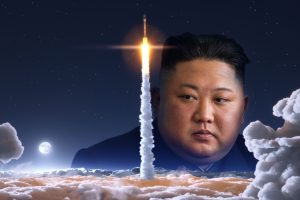Whatever happened to the North Korea peace process, which in 2018 looked so promising?
We have been here before, in broad terms. So let us begin with some background.
Since the Korean War ended in 1953 – with an armistice only, no peace treaty ever followed – after three bloody and hugely destructive years, the peninsula has known a tense peace for two-thirds of a century. That peace, underpinned by allied deterrence, has been punctuated by regular crises – especially in the 30 years since North Korea’s nuclear ambitions began to be apparent, transforming the DPRK’s threat from a local to a global one.
In 1994, the Korean Peninsula came perilously close to a new war. The Kim regime defied the International Atomic Energy Agency (IAEA) by removing spent fuel from its nuclear reactor at Yongbyon. That plutonium could have made half a dozen nuclear bombs. Then-U.S. President Bill Clinton took this threat so seriously that he considered a military strike, but drew back because the risks and casualties would have been unacceptably high. Instead, after ex-President Jimmy Carter’s semi-unauthorized visit to Pyongyang, Clinton switched to a peace process. That October, the United States and DPRK signed a detailed Agreed Framework (AF) for denuclearization.
This lasted several years, with Yongbyon sealed and monitored by the IAEA. But Kim Jong Il cheated, pursuing a second covert path to the bomb using highly enriched uranium (HEU). That in turn prompted Clinton’s more hawkish successor, George W. Bush, to terminate the AF and related bodies such as the Korean Peninsula Energy Development Organization (KEDO). And yet Bush, too, ended up reverting to dialogue, mainly in the framework of the multilateral Six Party Talks (6PT), incorporating both Koreas, the United States, Japan, Russia, and China (the host).
Lessons From the Past
This brief trip down memory lane offers several pertinent lessons. In no particular order:
First, the North Korean nuclear crisis is longstanding. It has seen many twists and turns.
Second, the risk of war is ever real. Jeffrey Lewis’ speculative novel, The 2020 Commission Report on the North Korean Nuclear Attacks Against the United States, is a chilling warning of how horrendous that would be today – lest anyone be tempted to make light of the dangers.
Third, the political weather on the peninsula can change rapidly between storms and sunshine – and back again. The barometer has rarely stayed set to fair for very long.
Fourth, one reason for the constant shifting is regime change – not in Pyongyang, as neocons fondly hope, but among its democratic interlocutors, chiefly the United States and South Korea. These countries regularly elect new leaders who may change policy to renege on or backtrack from previous agreements. Besides George W. Bush, as cited above, there’s the example of Lee Myung-bak, who after his election as South Korea president in 2007 never implemented the economic cooperation projects that his predecessor, Roh Moo-hyun, had agreed to at that year’s inter-Korean summit with Kim Jong Il.
Fifth and relatedly: With no policy consensus on how best to handle Pyongyang, politicians on left and right alike tend to fall back on ideology (Clinton is an exception). In both Washington and Seoul, hawks and doves – or strange hybrids like Trump – take their turn with pressure or dialogue, to no lasting avail. Neither approach has succeeded in denuclearizing North Korea.
Sixth, the Kim regime under three successive leaders has shown great skill and cunning, while giving scant reason for confidence that it can ever be trusted to keep its word or abide by any agreement it may sign. Indeed, to be blunt, the DPRK has won, and the rest of us have lost.
































